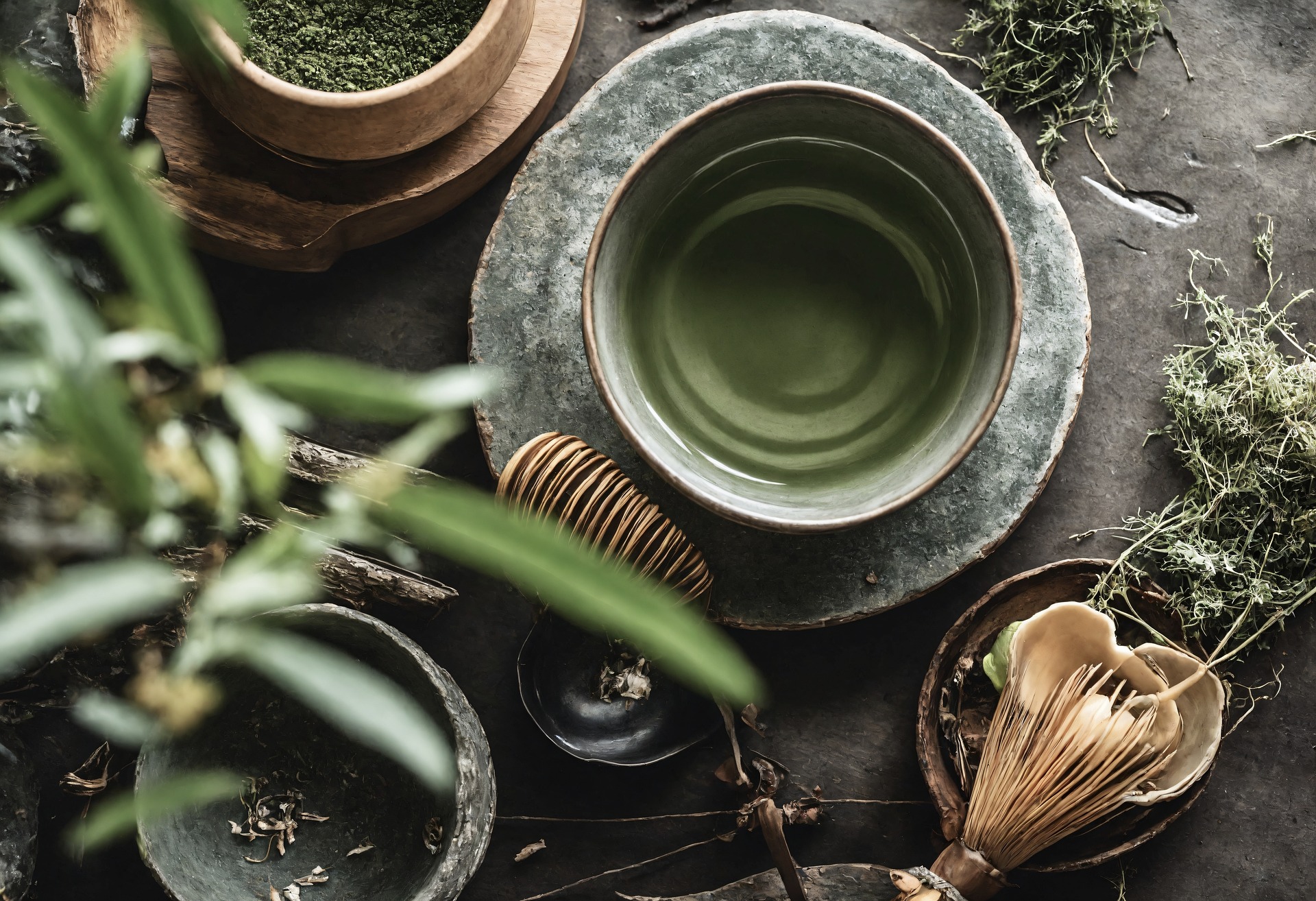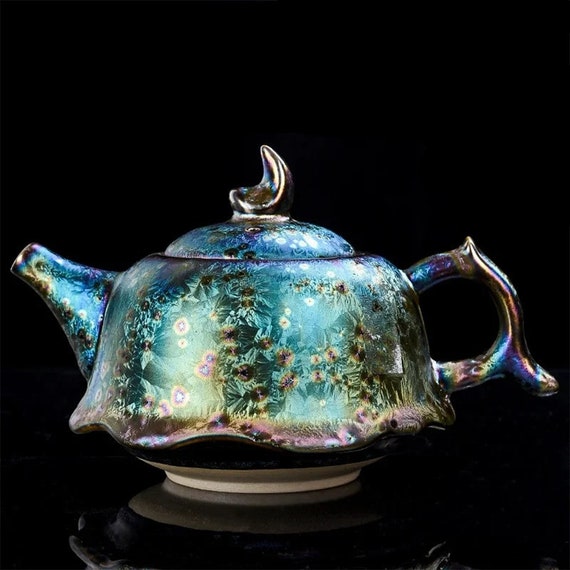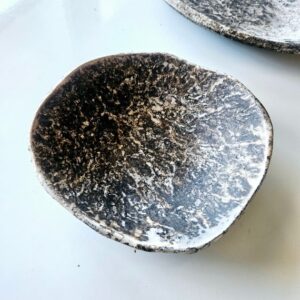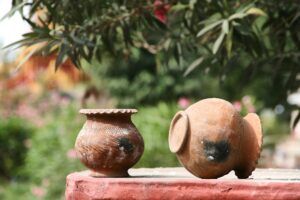Welcome tea enthusiasts! In the world of traditional tea sets, the elegant and unique jianzhan teaware stands out for its exquisite craftsmanship and centuries-old history. In this blog post, we delve into the fascinating world of jianzhan teaware and compare it with other traditional tea sets. Join us on this journey to uncover the beauty, history, and significance of jianzhan teaware, and discover how it differs from other beloved tea sets. Let’s explore the world of tea together!
Exploring Jianzhan Teaware
Jianzhan teaware, also known as Jian ware, is a type of Chinese tea ceramics that dates back to the Song Dynasty (960-1279 AD). Renowned for its unique characteristics and exquisite craftsmanship, Jianzhan teaware has become a symbol of Chinese tea culture. The name “Jianzhan” is derived from the Jian kilns in Jianyang, Fujian province, where these teaware pieces were traditionally produced.
How is Jian Zhan bowls made
History and Cultural Significance
- Historical Roots: Jianzhan teaware has a rich history that spans over a thousand years. It was initially created for the imperial court, reflecting its status as a high-quality and prestigious product.
- Zen Influence: The philosophy of Zen Buddhism heavily influenced the production and appreciation of Jianzhan teaware. The simplicity, elegance, and tranquility of these ceramics embody the Zen ideals of mindfulness and presence.
- Cultural Symbolism: Jianzhan teaware is deeply ingrained in Chinese culture, symbolizing harmony, respect for nature, and the art of tea drinking as a spiritual practice.
Unique Characteristics of Jianzhan Teaware
- Tenmoku Glaze: One of the defining features of Jianzhan teaware is its distinctive “oil spot” tenmoku glaze, which creates a mesmerizing pattern resembling oil droplets on the surface of the ceramics.
- Thermal Properties: Jianzhan teaware is renowned for its ability to retain heat, making it ideal for brewing and serving tea at the perfect temperature.
- Handcrafted Perfection: Each piece of Jianzhan teaware is meticulously handcrafted by skilled artisans, embodying a level of craftsmanship that is unparalleled in the world of ceramics.
Exquisite Craftsmanship
- Artisan Techniques: The creation of Jianzhan teaware involves intricate processes such as clay preparation, shaping, glazing, and firing in a wood-fired kiln, all of which require precision and skill.
- Firing Process: The unique firing process in a wood-fired kiln at high temperatures results in the stunning visual effects and durable quality of Jianzhan teaware.
- Individuality: Due to the handcrafted nature of Jianzhan teaware, each piece is unique, with slight variations in glaze patterns and color, adding to its charm and authenticity.
Examples of Jianzhan Teaware Brands
- Shan Ling Jianzhan: Known for its classic tenmoku glaze and elegant designs, Shan Ling Jianzhan teaware offers a timeless collection for tea enthusiasts.
- Qing Hui Tang: Combining traditional craftsmanship with modern aesthetics, Qing Hui Tang Jianzhan teaware is prized for its artistic beauty and functional excellence.
- Yu Hua Jianzhan: With a focus on innovation and quality, Yu Hua Jianzhan teaware features contemporary interpretations of classic Jianzhan designs, appealing to a wide range of tea lovers.
Comparing Jianzhan Teaware with Porcelain and Clay Traditional Tea Sets
When it comes to traditional tea sets, jianzhan teaware stands out for its unique characteristics that offer a distinct brewing experience. Let’s explore and contrast the design, materials, and brewing experience of jianzhan teaware with porcelain and clay tea sets.
Design
Jianzhan Teaware:
- Known for its mesmerizing glaze patterns, often resembling landscapes or natural scenery.
- The shape of jianzhan teaware is usually more robust, with a wide bowl and a sturdy handle, making it comfortable to hold.
Porcelain Tea Sets:
- Porcelain tea sets are characterized by their delicate and smooth texture, often featuring intricate hand-painted designs.
- The shape of porcelain tea sets tends to be more delicate and refined, with thin walls and a more elegant appearance.
Clay Tea Sets:
- Clay tea sets, such as Yixing clay teapots, are known for their earthy tones and porous nature that absorbs tea flavors over time.
- Clay tea sets are often simpler in design, focusing more on functionality than decorative elements.
Materials
Jianzhan Teaware:
- Jianzhan teaware is typically made from a special type of clay known as “zisha” clay, which is high-fired to create a durable and heat-retaining teacup.
- The glaze used in jianzhan teaware enhances the colors and patterns, adding to the aesthetic appeal of the teacup.
Porcelain Tea Sets:
- Porcelain tea sets are crafted from fine white clay that is fired at high temperatures to achieve a smooth and glossy finish.
- Porcelain is non-porous, making it easy to clean and resistant to staining, but it may not retain heat as well as clay teaware.
Clay Tea Sets:
- Clay tea sets are traditionally made from various types of clay, such as Yixing clay, which is believed to enhance the flavor of tea.
- The porous nature of clay teaware allows it to absorb the aroma and flavors of the tea, creating a more nuanced drinking experience.
Brewing Experience
Jianzhan Teaware:
- The heat-retaining properties of jianzhan teaware help to maintain the temperature of the tea, allowing for a more consistent brewing process.
- The glazed interior of jianzhan teaware prevents the tea from absorbing unwanted flavors, ensuring a pure and authentic taste.
Porcelain Tea Sets:
- Porcelain tea sets are versatile and suitable for brewing a wide range of teas, as they do not retain flavors from previous brews.
- The smooth surface of porcelain teaware allows for easy pouring and a refined drinking experience.
Clay Tea Sets:
- Clay tea sets are favored by tea connoisseurs for their ability to enhance the flavors of certain teas, particularly oolong and pu-erh teas.
- Over time, the clay absorbs the oils and compounds from the tea, developing a patina that adds complexity to the brewing experience.
In conclusion, each type of traditional tea set offers a unique approach to brewing tea, catering to different preferences and tastes. Whether you prefer the artistic flair of jianzhan teaware, the elegance of porcelain tea sets, or the flavor-enhancing properties of clay teaware, there is a traditional tea set to suit every tea lover’s palate.
Balancing Functionality and Aesthetics in Jianzhan Teaware
When it comes to enjoying a cup of tea, the vessel you use plays a significant role in shaping the entire experience. Jianzhan teaware, with its rich history and unique characteristics, excels in balancing functionality with aesthetics to enhance the overall tea-drinking ritual.
Traditional Craftsmanship Meets Modern Design
Jianzhan teaware, also known as Jian ware, originates from the Song Dynasty in China and has been prized for its intricate craftsmanship and beautiful glazes. The teaware is often handcrafted by skilled artisans, combining traditional techniques with contemporary designs to create pieces that are both visually stunning and highly functional.
- Example: Ming Yue Jianzhan Teacup – crafted using ancient Jianzhan firing methods, resulting in a mesmerizing oil-spot effect on the surface.
Functionality for the Perfect Brew
Despite the focus on aesthetics, Jianzhan teaware is designed with functionality in mind to elevate the tea-drinking experience. The materials used, such as high-quality clay and glazes, are chosen for their heat retention properties and ability to enhance the flavor of the tea.
- Example: Jianzhan Purple Clay Teapot – featuring a built-in filter and ergonomic handle for easy pouring, ensuring a smooth brewing process.
Enhancing the Senses
The intricate designs and vibrant colors of Jianzhan teaware engage the senses and add an element of beauty to the tea ceremony. The visual appeal of the teaware can influence the perception of the tea itself, making the act of brewing and sipping tea a multisensory experience.
- Example: Ming Dynasty Jianzhan Tea Bowl – with its striking black glaze and subtle metallic luster, creating a visually captivating backdrop for enjoying tea.
Ritual and Tradition
Jianzhan teaware embodies centuries-old traditions of tea drinking, bringing a sense of history and ritual to each cup. The careful selection of teaware, the brewing process, and the act of pouring and sipping tea all contribute to a mindful and meditative tea-drinking experience.
- Example: Qing Hui Jianzhan Tea Set – comprising a teapot, teacups, and a tea tray, designed to replicate the elegance and grace of ancient Chinese tea ceremonies.
Price and Accessibility of Jianzhan Teaware
Jianzhan teaware, known for its unique glaze and cultural significance, has gained popularity among tea enthusiasts worldwide. In this blog section, we will delve into the cost and availability of Jianzhan teaware in comparison to other traditional tea sets, taking into account factors such as value and rarity.
Cost Comparison
When evaluating the price of Jianzhan teaware against other traditional tea sets like Yixing clay teapots or Japanese porcelain tea sets, several factors come into play:
- Jianzhan Teaware:
- Renowned for its intricate craftsmanship and historical value
- Prices can vary widely based on the artist, glaze, and design
- Examples include the Wencai Jianzhan Cup or the Qianshan Jianzhan Teapot
- Yixing Clay Teapots:
- Known for their porous nature that enhances tea flavor over time
- Generally more affordable than high-end Jianzhan pieces
- Brands like Zisha Purple Clay offer a range of options for different budgets
- Japanese Porcelain Tea Sets:
- Celebrated for their delicate designs and durability
- Often more accessible in terms of pricing compared to Jianzhan teaware
- Brands such as Arita or Kutani provide a wide selection of porcelain sets
Accessibility and Rarity
In terms of availability and rarity, Jianzhan teaware presents a unique proposition:
- Jianzhan Teaware:
- Considered relatively rare due to the specialized techniques and limited production
- High demand from collectors and connoisseurs worldwide can impact availability
- Acquiring authentic Jianzhan pieces may require purchasing from reputable sources or auctions
- Yixing Clay Teapots:
- Widely available in various styles and price ranges
- Authenticity can be an issue with mass-produced replicas flooding the market
- Established brands like Dingshan Clay maintain a reputation for quality and authenticity
- Japanese Porcelain Tea Sets:
- Easily accessible through online retailers and specialty stores
- Production on a larger scale leads to a wider availability of designs and styles
- Brands like Hario or Tokoname offer a diverse selection catering to different preferences
Choosing the Perfect Tea Set
In conclusion, the comparison between Jianzhan teaware and other traditional tea sets highlights the rich history, exquisite craftsmanship, and exceptional tea-brewing quality of Jianzhan. For those seeking a unique and authentic tea-drinking experience, choosing Jianzhan teaware is recommended for its combination of tradition and quality.
Jianzhan Teaware FAQs
Jianzhan teaware, also known as Tenmoku tea bowls, have significant historical and cultural importance in East Asia. Originating from China during the Song Dynasty, Jianzhan tea bowls were highly valued for their unique glazing techniques, which resulted in beautiful and distinctive patterns. These tea bowls were popular among scholars and the elite for tea ceremonies and were considered a symbol of refinement and sophistication.
Compared to other traditional tea sets, Jianzhan teaware stands out for its craftsmanship and aesthetic appeal. The intricate patterns created during the firing process, known as “hare’s fur” and “oil spot” patterns, are highly prized and contribute to the cultural significance of Jianzhan teaware. Additionally, the unique shape and design of Jianzhan tea bowls were specifically crafted to enhance the tea-drinking experience, making them not only visually appealing but also functional.
Overall, Jianzhan teaware holds a special place in the history of tea culture and is revered for its craftsmanship, beauty, and cultural significance, setting it apart from other traditional tea sets.
Jianzhan teaware, also known as Jian ware or Jian ware, originated from Jianyang in Fujian province, China. These teaware sets are typically used for brewing dark teas like black tea, oolong tea, and pu-erh tea. The dark color and unique glaze of Jianzhan teaware can complement the rich flavors of these teas and enhance the overall tea-drinking experience. However, it is important to note that personal preference plays a significant role in tea brewing, and some people might enjoy using Jianzhan teaware for other tea types as well.
Jianzhan teaware, also known as Jian ware, is a type of Chinese tea set known for its unique glaze and craftsmanship. Jianzhan teaware is believed to enhance the tea-drinking experience differently from other traditional tea sets due to its ability to change color and develop a patina over time. This transformation is said to add depth to the tea-drinking experience by creating a connection between the teaware, the tea, and the drinker. Additionally, the dark glaze of Jianzhan teaware is thought to enhance the aroma and flavor of the tea, making each sip more enjoyable and immersive.








Overall, this article sparked my interest in exploring Jianzhan Teaware further and understanding how it enhances the tea-drinking experience.
I wish there were more pictures included in the article to better visualize the differences in design and craftsmanship between Jianzhan Teaware and other traditional sets.
The historical background provided about Jianzhan Teaware added depth to the discussion and made me appreciate the artistry behind these teaware sets.
I found the comparison between Jianzhan Teaware and other traditional tea sets very informative. It helped me understand the unique characteristics of each set.
I would have liked to see a section discussing the practical aspects, such as usability and maintenance, of Jianzhan Teaware compared to other traditional tea sets.